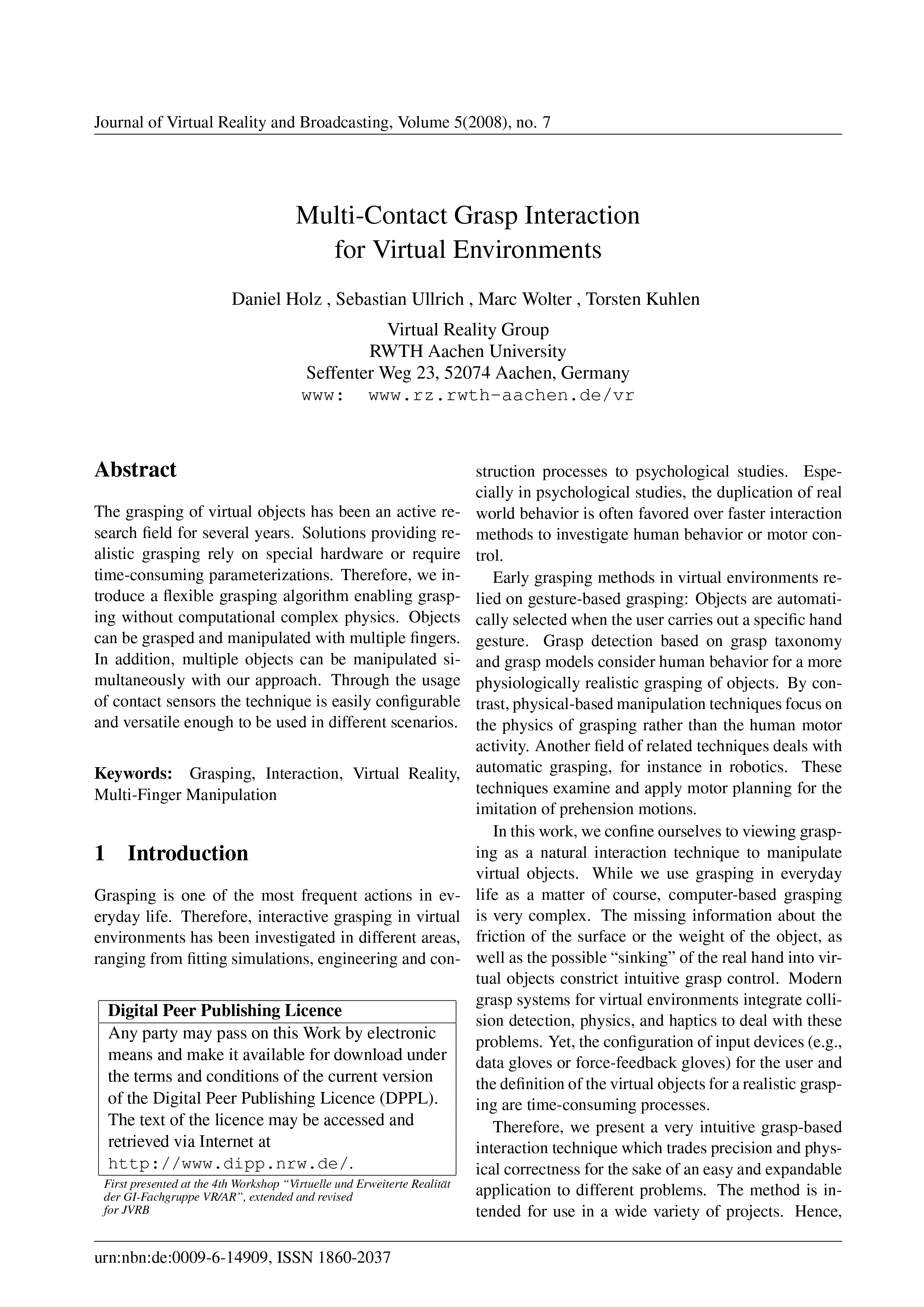Multi-Contact Grasp Interaction for Virtual Environments
DOI:
https://doi.org/10.20385/1860-2037/5.2008.7Keywords:
Grasping, Interaction, Multi-Finger Manipulation, Virtual RealityAbstract
The grasping of virtual objects has been an active research field for several years. Solutions providing realistic grasping rely on special hardware or require time-consuming parameterizations. Therefore, we introduce a flexible grasping algorithm enabling grasping without computational complex physics. Objects can be grasped and manipulated with multiple fingers. In addition, multiple objects can be manipulated simultaneously with our approach. Through the usage of contact sensors the technique is easily configurable and versatile enough to be used in different scenarios.
Additional Files
Published
2008-07-24
Issue
Section
GI VR/AR 2007





